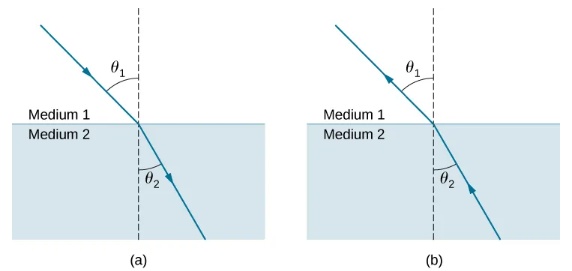Refraction
The changing of a light ray’s direction (loosely called bending) when it passes through substances of different refractive indices is called refraction and is related to changes in the speed of light, .
Refraction is responsible for a tremendous range of optical phenomena, from the action of lenses to data transmission through optical fibers.
The below figure how you may see the same fish appearing to be in two different places, this is because of refraction only.

The figure below shows how a ray of light changes direction when it passes from one medium to another. As before, the angles are measured relative to a perpendicular to the surface at the point where the light ray crosses it.
The change in direction of the light ray depends on the relative values of the indices of refraction of the two media involved. In the situations shown, medium two has a greater index of refraction than medium.

The change in direction of a light ray as it passes from one medium to another depends on both the incident angle and the change in speed (refractive index) of the light wave. This relationship is described by Snell's law, which governs the behavior of light at the boundary between two different transparent media.
Here and are the indices of refraction for media and , and and are the angles between the rays and the perpendicular in media and .